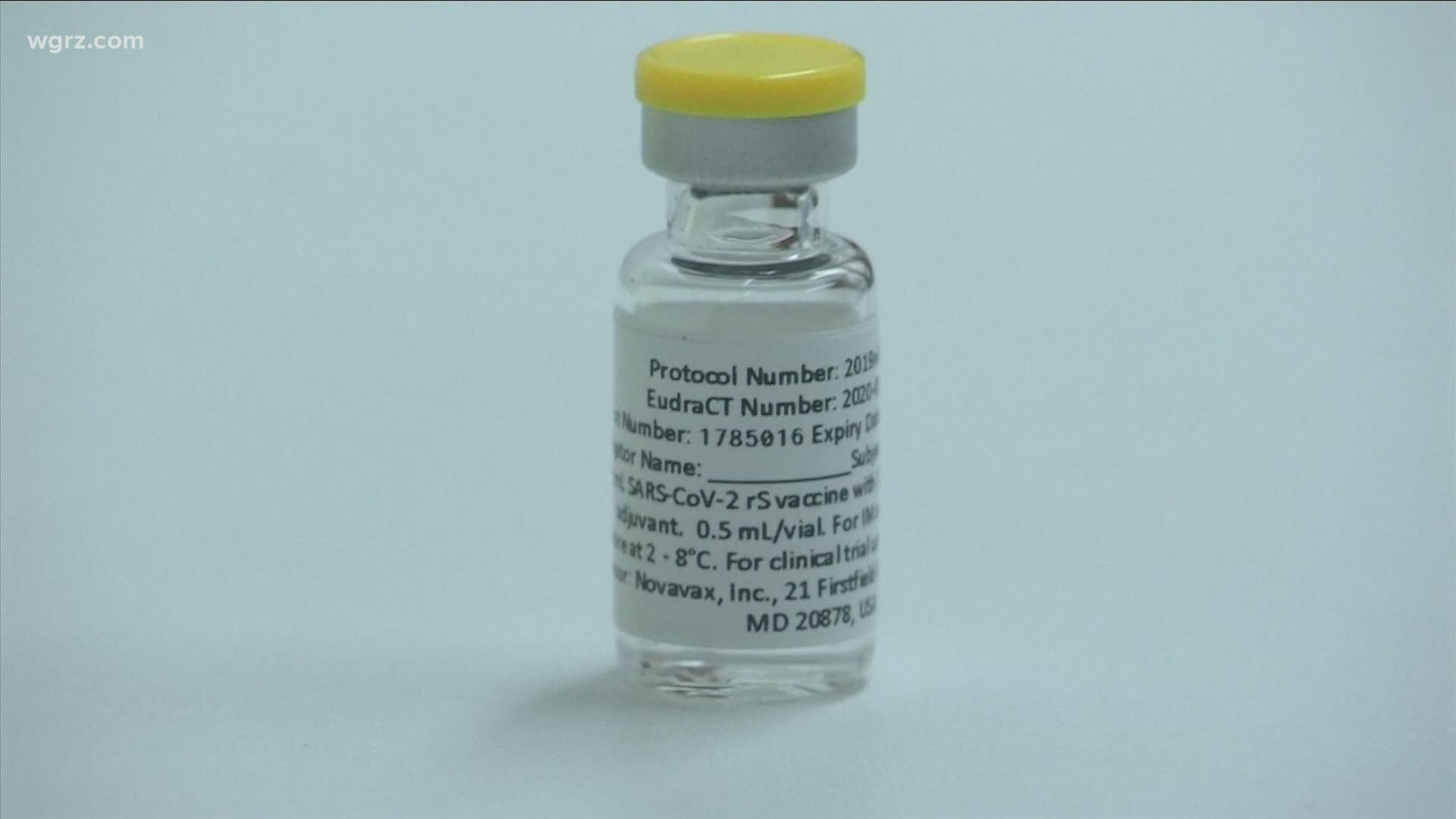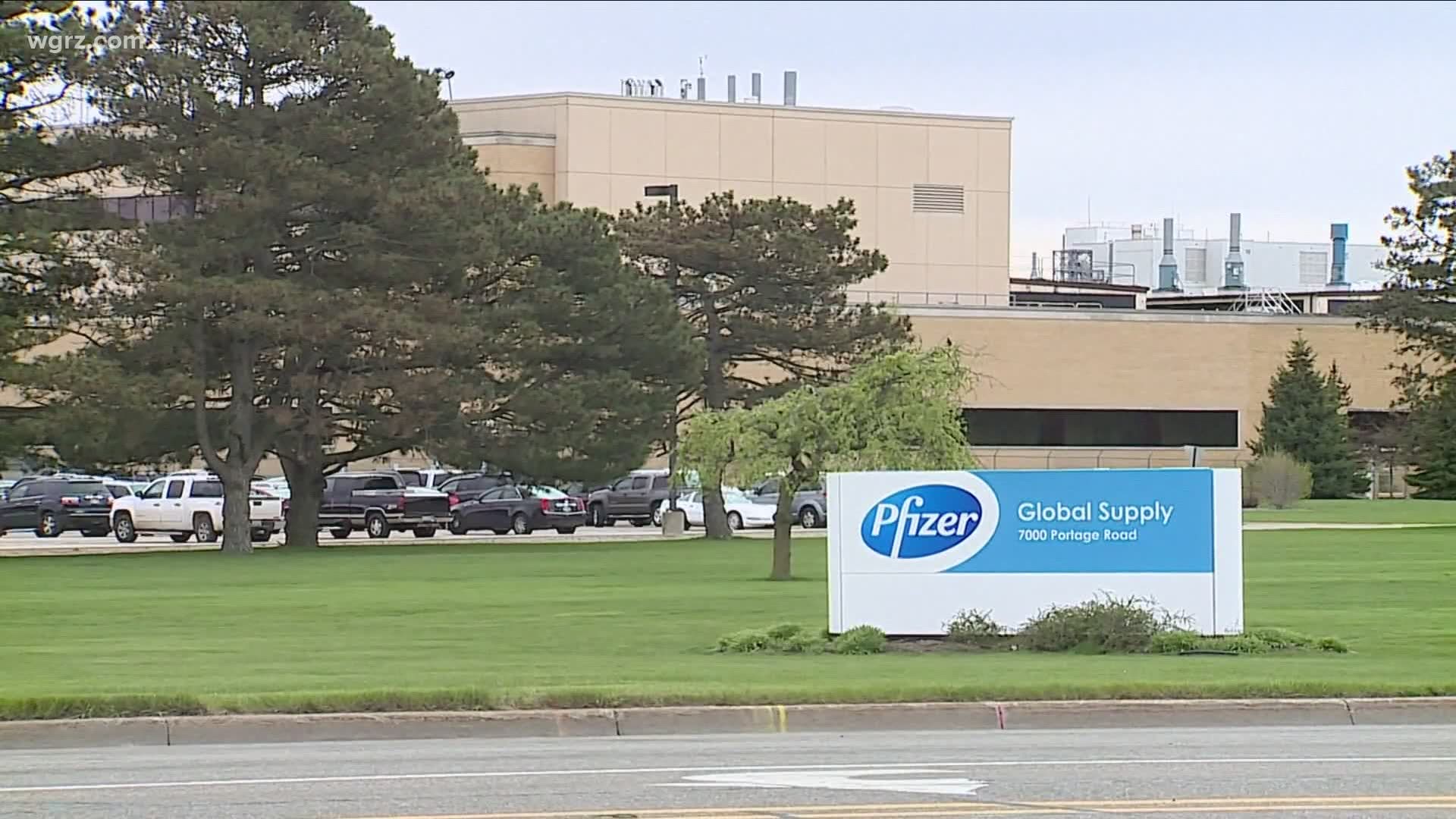ALBANY, N.Y. — New York Governor Andrew Cuomo held a press conference on Friday, where he shared news regarding the rates of COVID-19 locally, the statewide situation with the virus and hospitalization, updates on vaccinations and information the state budget.
On Thursday in New York State, the state saw a record number of COVID-19 tests conducted, 120 deaths, and decreases in hospitalizations, ICU patients and intubated patients.
Cuomo discussed in the press conference how the Western New York region has shown improvement, but the Finger Lakes is now an area of concern.
"Finger Lakes in red," Cuomo said in relation to the highlighted text on a map, showing that the Finger Lakes region had the highest rolling COVID-19 positivity rate," which has been consistent over the past several days, growing for a couple weeks."
Finger Lakes' rolling percent positive rate, at 8.31 percent, is double what New York City's and nearly double what North County's rates are. The Finger Lakes region includes Orleans, Genesee, Wyoming and Monroe counties.
Western New York's rates are down from where they were, Cuomo said. Currently, Western New York's rate of COVID-19 patients hospitalized relative to the population of the region is 0.03 percent. There are 474 people hospitalized in the region.
Comparatively, the Finger Lakes has the highest rate of patients hospitalized relative to the population, in the state, at 0.06 percent. There are 746 people hospitalized in the Finger Lakes with COVID-19.
The lowest rate of patients hospitalized relative to the population, in the state, is 0.02 percent, in both the North County and New York City regions. North County has 63 people in hospitals and New York City has 1,984 people hospitalized.
He added that hospitals in New York City are in crisis management. Cuomo said that he has spoken with hospital leaders in Erie County, who say they've added capacity.
"Big question, will we have shutdowns" Cuomo said, saying that bobody can answer that question today, but, "it will be determined by us, by what we do, over the coming weeks. I do not believe that we are destined to have a shutdown. There is no destiny here. Destiny is what we make it."
"A shutdown is totally avoidable, totally," Cuomo said. "Shutdowns are very, very harmful," Cuomo added, saying that they hurt businesses, people, and have mental health effects.
"Slow the spread, stop the shutdown," Cuomo repeated multiple times, saying it should be New Yorkers' new mantra, "that's the consequence and the connection."
FDA Advisory Committee recommended the Moderna vaccine on Thursday, and New York's Clinical Advisory Task Force approved it on Friday morning.
Cuomo emphasized that the New York panel has worked faster than the government, leaving no delay in New Yorkers getting the vaccine.
On Monday, vaccinations will begin in the 618 long-term care facilities that have enrolled in the Wallgreens/CVS vaccination program. The pharmacies will enter these nursing homes and care facilities to administer the vaccine.
Pfizer and Moderna vaccines, according to Cuomo, are being distributed to 292 sites statewide. Currently, 36,800 vaccines are going to Western New York, 16,600 going to the Southern Tier, and 33,650 to the Finger Lakes.
Regional hubs will be in charge of phase two distribution, which will include essential workers and priority general public and is expected to start in late January.
Regional hubs leaders locally are Catholic Health for Western New York, University of Rochester Medical Center for the Finger Lakes, and United Health Services for the Southern Tier.
So far, 19,000 people have been vaccinated in phase one, which includes priority healthcare workers and those living or working in nursing homes.
Cuomo also discussed how the state will have to make decisions about if the state budget should be created now, and tax increases created now, despite not knowing if federal aid will be coming in the future. Or, if the state should wait to see if federal aid is coming, and do the budget in April.
Currently, the AFL-CIO Union supports waiting until April.


